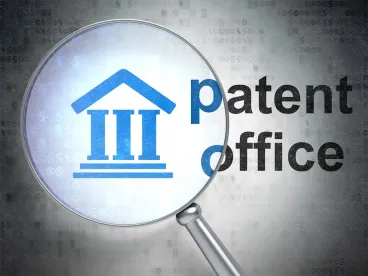Introduction
In a post-grant review (PGR), the Patent Trial and Appeal Board (“the Board”) reviews the patentability of one or more patent claims on any ground that could be raised under 35 U.S.C. § 282(b)(2) or (3), including, e.g., obviousness. The PGR process starts when a third party files a petition within 9 months of the grant of the challenged patent or issuance of a reissue patent. Under 35 U.S.C. § 324(a), the Board may institute a PGR if the petitioner shows it is more likely than not that at least one challenged claim is unpatentable.
A PGR petition may only be instituted if the petitioner meets its burden to show, “in writing and with particularity, each claim challenged, the grounds on which the challenge to each claim is based, and the evidence that supports the grounds for the challenge to each claim.” 35 U.S.C. § 322(a)(3); see also Harmonic Inc. v. Avid Tech., Inc., 815 F.3d 1356, 1363 (Fed. Cir. 2016). This burden never shifts to the patent owner. Harmonic, 815 F.3d at 1363.
Holding
In Eton Pharmaceuticals, Inc. v. Exela Pharma Sciences, LLC, PGR2020-00086, Paper 11 (Apr. 23, 2021), the Board denied institution of a PGR for failure to meet the requirements of 35 U.S.C. § 322(a)(3). Specifically, the Board found that the petitioner’s obviousness argument lacked particularity and did not provide a sufficient evidentiary basis to conclude it was “more likely than not” that the claims were unpatentable as obvious.
Background
Eton Pharmaceuticals petitioned for PGR of all claims of U.S. Patent No. 10,653,719 (“the ’719 patent”), contending that the claims were unpatentable as obvious. The ’719 patent, owned by Exela Pharma Sciences, is directed to stable L-cysteine compositions for injection.
The specification of the ’719 patent discloses that “known L-cysteine compositions contain up to 5000 ppb Aluminum.” See ’719 patent, 7:21-22. The specification further discloses that reduced aluminum compositions provide therapeutically effective L-cysteine in a stable composition while permitting exposure to less than or equal to 4-5 micrograms per kilogram per day (μg/kg/d) to avoid or minimize aluminum toxicity. Id. at 7:35-38. Furthermore, with time, the stability of the L-cysteine solutions decreases and aluminum content increases.
Claim 1 of the ’719 patent reads (with bracketing for reference):
-
A solution of L-cysteine comprising,
[A] a pharmaceutically acceptable carrier,
[B] about 50 mg/ml of L-cysteine hydrochloride monohydrate, or equivalent amount of pharmaceutically acceptable L-cysteine or a salt or hydrate thereof,
[C] less than about 150 ppb of aluminum,
[D] a pH from about 1.0 to about 2.5, and
[E] wherein the solution is substantially free of visually detectable particulate matter and suitable for use as an additive in a parenteral nutrition composition for administration to an individual.
Prior Art and Assertions of Unpatentability
Eton asserted that the combination of a package insert and label for L-cysteine hydrochloride—an L-cysteine hydrochloride injection solution from Sandoz, Inc.—and the knowledge of a person of ordinary skill in the art would render the ’719 patent obvious.
The Sandoz label describes a solution containing 50 mg of L-cysteine hydrochloride monohydrate and water, with the air replaced with nitrogen, and a pH of 1.0-2.5. The label also states that “the product contains no more than 5000 mcg/L of aluminum” and that the product contains aluminum, which may be toxic.
Particularity
In Harmonic, the Supreme Court held that “the petitioner has the burden from the onset to show with particularity why the patent it challenges is unpatentable.” Harmonic, 815 F.3d at 1363. The particularity requirement ensures a patent owner has sufficient notice of the challenge against it. Id.
Eton argued that claim elements 1(A), 1(B), 1(D), and 1(E) were disclosed in the Sandoz label. Regarding claim element 1(C), Eton argued that the Sandoz label disclosed a product that contains no more than 5000 ppb of aluminum, encompassing the claimed range of “less than about 150 ppb of aluminum.” Eton further contended that if a skilled artisan had tested the Sandoz product, they would have found that, immediately after manufacture, the aluminum levels were at the low end of the alleged 0 to 5000 ppb range.
Exela asserted that Eton’s obviousness argument must be limited to the product characteristics described in the Sandoz label. The label makes clear the product may contain up to 5,000 ppb of aluminum during its shelf life. Exela further contended that Eton repeatedly conflated the “Sandoz Product” with the “Sandoz label,” i.e., the Sandoz package label and package insert, as a single prior art source.
Further, Exela argued that Eton’s expert was not qualified to interpret labels for parenteral products, and that Eton’s routine optimization argument was based on hindsight and ignored the complexity of the environmental conditions contributing to aluminum levels in parenteral solutions.
The Board agreed with Exela, holding that the petition lacked particularity because it “improperly mixe[d]-and-matche[d] two different types of alleged prior art under the ‘Sandoz Label’ umbrella—(1) the contents of a printed publication, and (2) alleged features of a ‘Sandoz product’ associated with the label that is neither described by the label nor substantiated with any evidence.” The Board further held that Eton’s expert’s declaration also mixed and matched the two items. Therefore, the Board held, Eton failed to satisfy the notice requirement of 35 U.S.C. § 322(a).
Range
Eton argued that the evidence of record did not support the argument that a skilled artisan would have understood the Sandoz label to teach a range of 0 to 5,000 ppb aluminum. The Sandoz label states that the product contains “no more than 5000 mcg/L aluminum.” On the other hand, Exela’s expert asserted that a pharmacist reading the label would interpret “contains no more than 5,000 ppb of aluminum” as the maximum aluminum content. The Board agreed, holding that the evidence in the record supported Exela’s expert’s position.
Moreover, Eton’s expert recognized that the Sandoz label warned that the product contained aluminum, “which may be toxic.” The Board held that this recognition—that the product contains aluminum—weakened Eton’s expert’s conclusion that the lower limit of the Sandoz label is zero. The Board instead agreed with Exela, holding that because the label specifically warned about the presence of aluminum, the Sandoz label would be understood by a skilled artisan to reflect a maximum level of aluminum and not a range that extended to 0.
Optimization
Finally, Eton argued that a skilled artisan would have considered “well-known” sources of potential aluminum contamination to arrive at claim element 1(C). For this argument, Eton contended that FDA regulations and other industry communications, which directed a lower amount of aluminum in L-cysteine parenteral compositions, would motivate a skilled artisan to lower the aluminum levels in the Sandoz product.
The Board held that, while this evidence supported the position that there would have been motivation to avoid aluminum toxicity and lower the levels of aluminum in parenteral products, the presence of this motivation was insufficient to reach a conclusion of obviousness. Knowing the FDA’s goal may provide a motivation to lower the aluminum limit, the Board held, but it does not provide a path of how to achieve that goal. “[I]t is …not permissible to reach an obviousness conclusion by allowing each of numerous possible choices to be tried until one possibly arrived at a successful result.” Eton Pharmaceuticals, PGR2020-00086, Paper 11 at 22.
Takeaways
For a PGR to succeed, the petition must show with particularity why the patent is unpatentable. When challenging a patent as obvious under 35 U.S.C. § 103 based on overlapping ranges and alleged “routine optimization,” the burden is on the petitioner to demonstrate that prior art clearly teaches overlapping ranges and a pathway to achieve goals of “routine optimization.”




 />i
/>i

